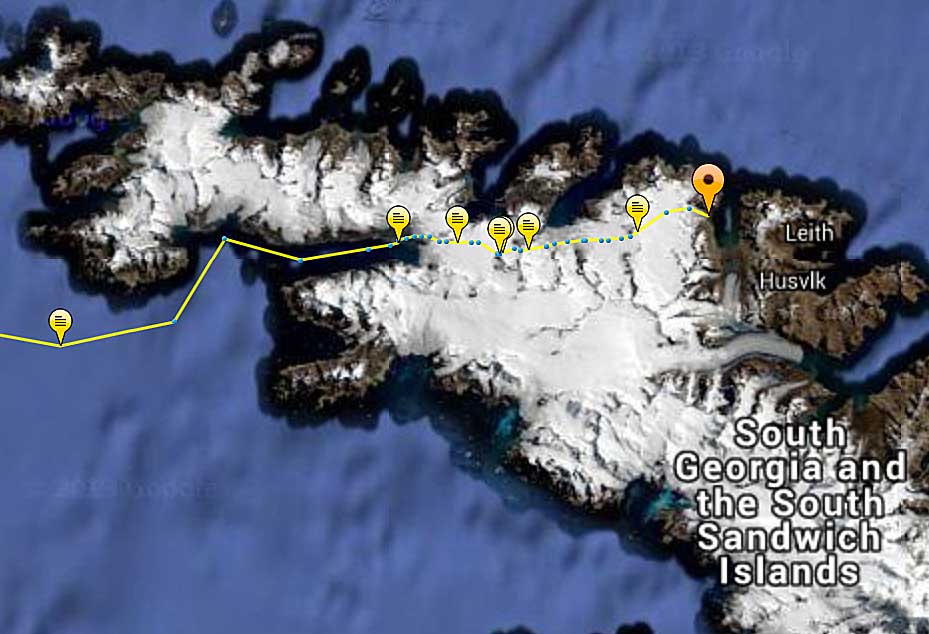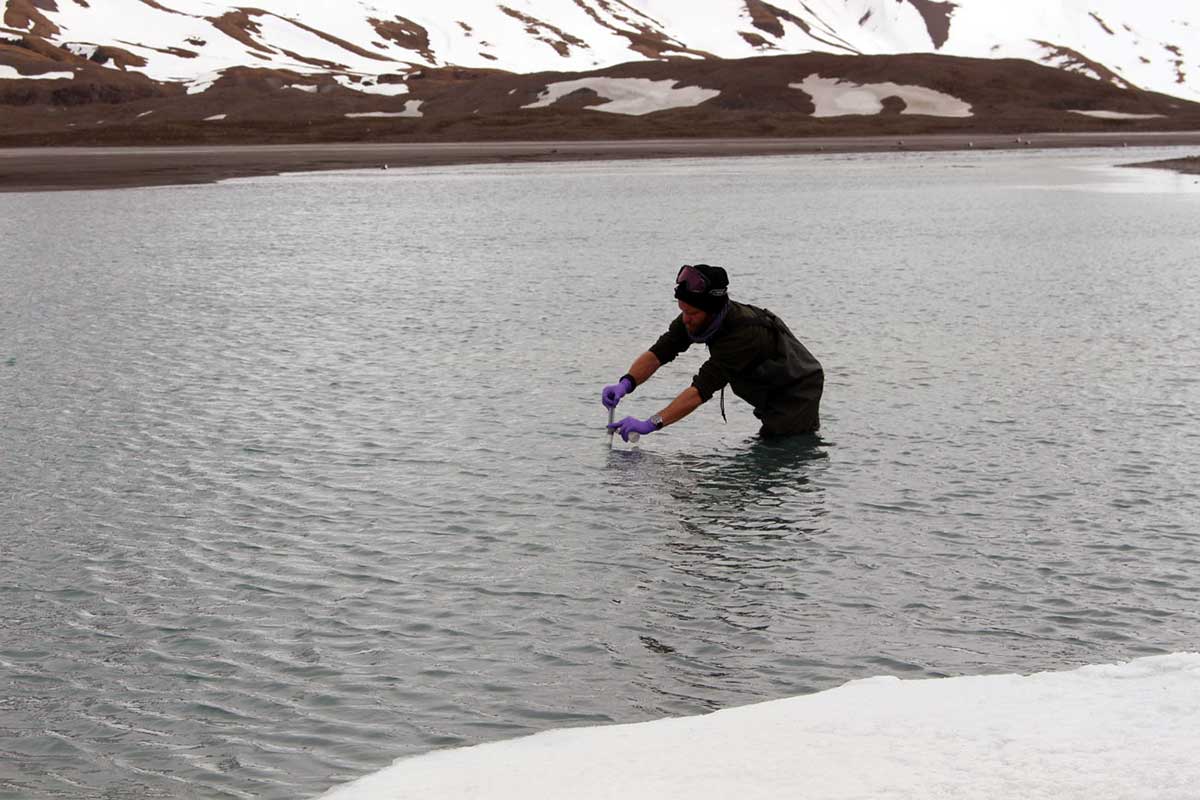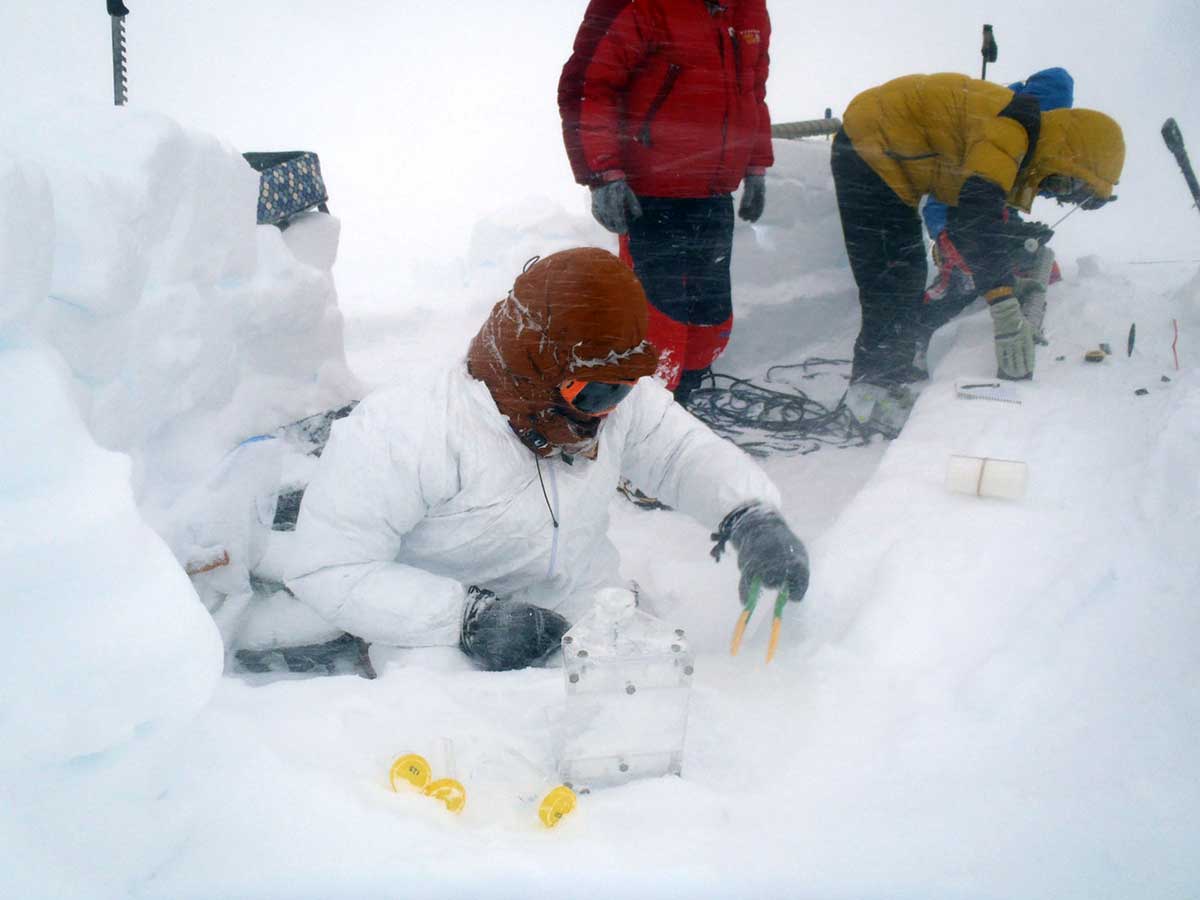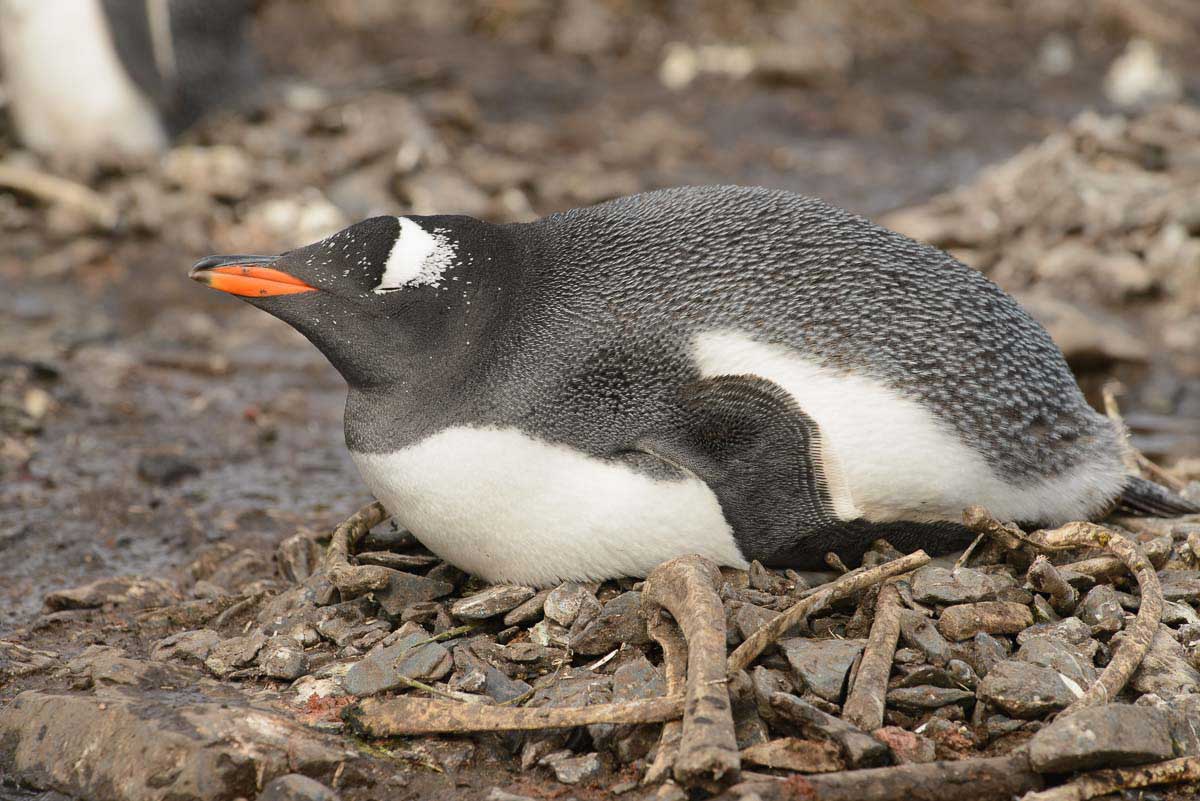This newsletter is not produced by GSGSSI; it does not necessarily reflect their views.
To subscribe to the SGIsland News Alerts list click here
October was my first opportunity to visit South Georgia since taking up post in July. It was a return visit: I’d had the privilege of visiting before, in 2011, when I worked with the FCO. It didn’t disappoint. After 4 days at sea South Georgia has an extraordinary vibrancy and splendour from snow-capped peaks to wildlife littered foreshores. At the start of October South Georgia is still much covered by snow, but spring had begun to take hold and the wildlife was starting to re-appear in numbers. The Government Officers planned a schedule for me over the course of a couple of weeks that gave me a good insight into a broad cross-section of their work and some of the issues and challenges they face. There is a huge variety of work going on – and they lost no time in giving me some practical experience of doing it! The Government Officers inevitably spend much time working with the British Antarctic Survey staff on base. I was impressed by their skills and experience, and readiness to help and find solutions to problems. They deliver a huge amount for us, from scientific research to boating support and medical care, all under the supervision of the Station Leader.
The South Georgia Heritage Trust was getting into full swing with the arrival of the museum team doing important work to record and conserve the heritage and run the museum and shop. Also present was a New Zealand team conducting laser surveys of the old whaling stations and who, despite some feet of snow at Prince Olav Harbour, didn’t lose a day out of their schedule due to bad weather and are now processing their data back in New Zealand to create virtual imagery. I joined them for a day at Stromness and Husvik to see them in action and see for myself some of South Georgia’s heritage in situ. Their work has helped to capture, for posterity, much of South Georgia’s rich whaling history, which we hope to be able to bring to life in digital form through our website and other media. Alongside all this, October also saw the GSGSSI building team arrive in South Georgia and I spent some time with them seeing for myself some of the challenges and opportunities for heritage in Grytviken. The team is delivering a significant programme of work over the coming season, agreed with our Norwegian partners, including putting the finishing touches on the Slop Chest, renovated as the new Post Office and looking very good indeed. Their craftsmanship has helped to transform Grytviken since I was last there 4 years ago. My time in South Georgia was an immersive two weeks: I return not just better informed but with a real appreciation for the hard work, commitment and resourcefulness of all the team at KEP and Grytviken who keep the administration operating at the ‘sharp’ end.
A privately funded conference to assess the scientific requirements of South Georgia was held in the Falkland Islands in October. Fifteen scientists representing various institutes from around the world flew in to attend the conference. Project Manager Dr Vicky Peck, from the British Antarctic Survey, explained that the South Georgia Future Science Project wanted to identify what the scientific interests in the island were and how they could best be facilitated.
Those attending the conference went to a series of workshops and on some field trips. They discussed a wide range of potential future science projects that could be based on South Georgia or in the surrounding area. The area’s potential for research opportunities was recognised and the science community seems keen to explore these further.
One particular phenomenon of interest was the large phytoplankton bloom that occurs regularly around the island. Professor Richard Sanders of the UK’s National Oceanography Centre (NOC), said after the meeting “This meeting was an excellent opportunity to be part of a global collaboration of scientists aiming to improve our understanding of this understudied and important part of the world. The area around South Georgia is home to the most concentrated phytoplankton bloom in the Southern Ocean, which absorbs atmospheric C02 as well as forming the base of the food web, feeding krill.”
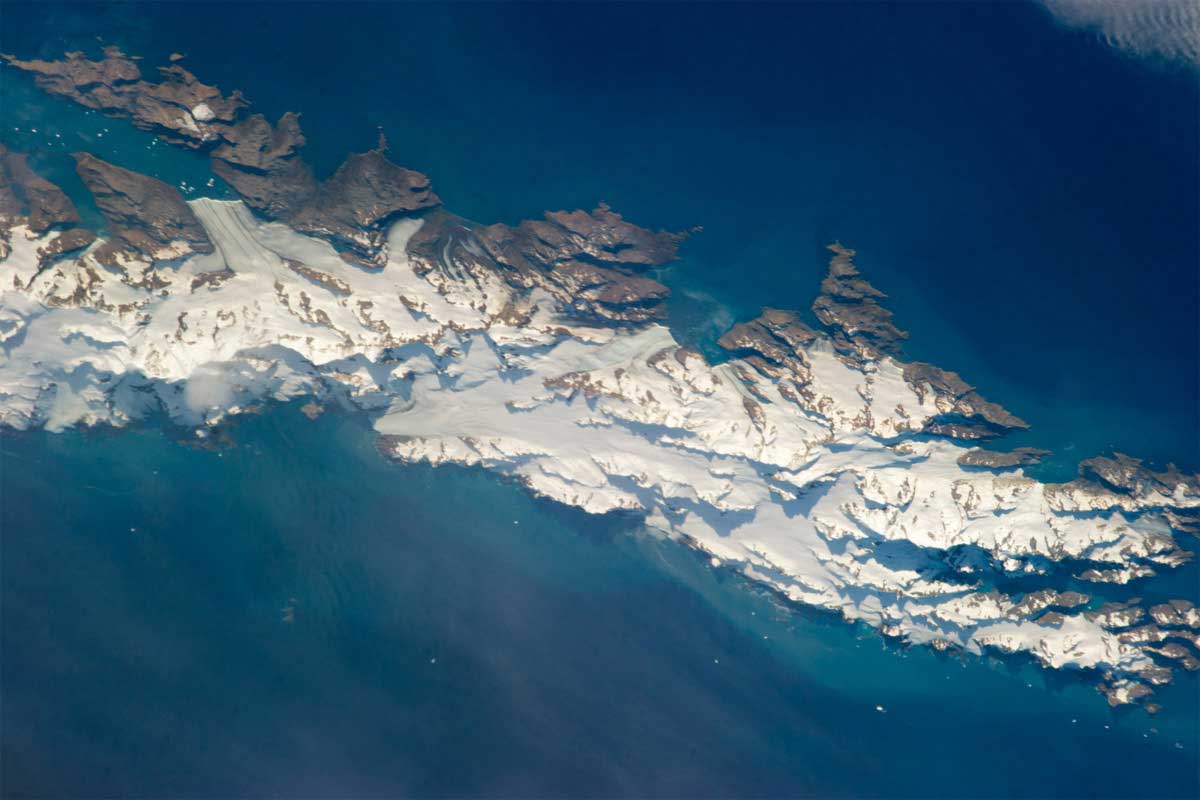
South Georgia and the ocean around it hold much of interest to scientists. Photo International Space Station (ISS).
The conference was hosted by The South Atlantic Environmental Research Institute (SAERI) and it was privately funded by the
Mamont Foundation, an organisation established in 2007 to fund the exploration of the Polar Regions in order to better understand the earth.
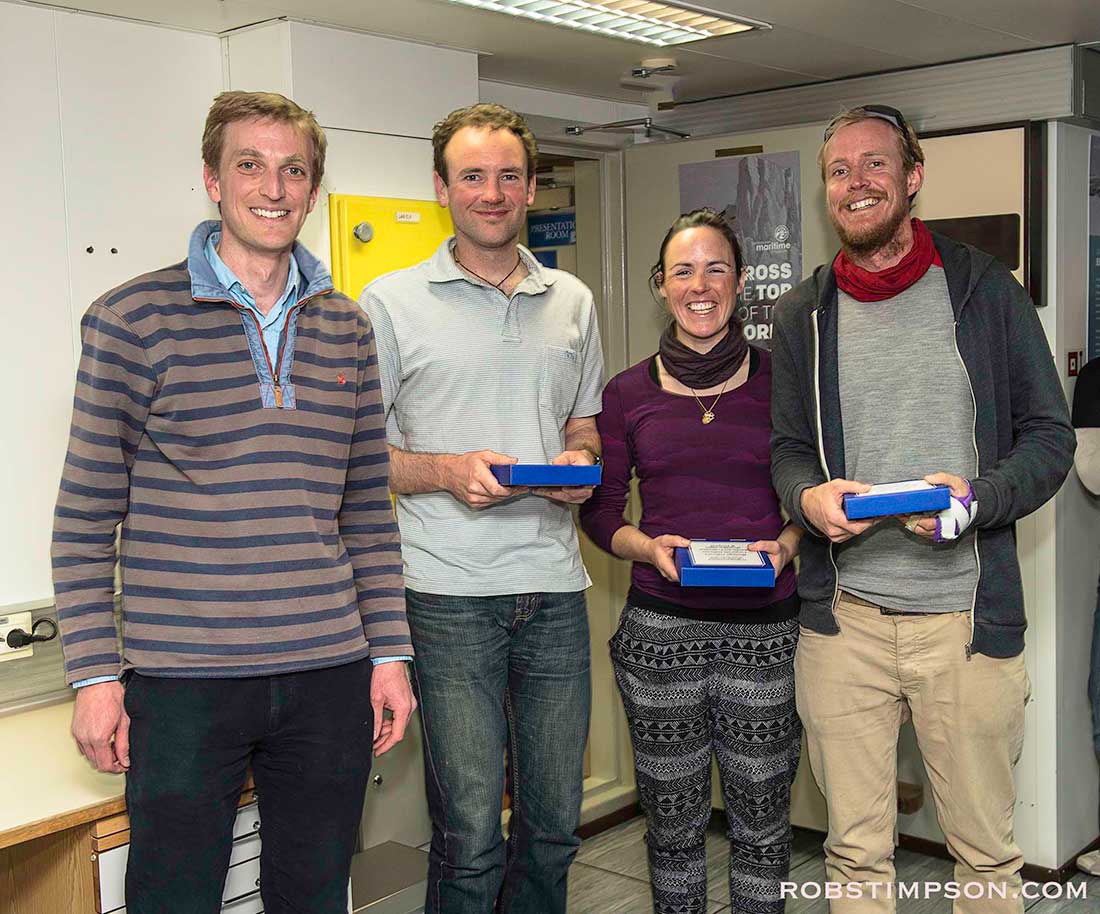
The young explorers were presented with a South Georgia crest each by GSGSSI CEO James Jansen (left).
The Antarctic Heritage Trust (New Zealand) recently provided an opportunity of a lifetime for three young people to participate in a repeat of Shackleton’s crossing of South Georgia in October, to mark the centenary of the original crossing. The explorers, Tom MacTavish (NZ), Sinéad Hunt (IE) and James Blake (UK/NZ), completed their journey on 22 October. The heroic age may be over, but these young people demonstrated that the spirit of adventure, determination and commitment lives on, and are a remarkable example of collaboration as a team and as representatives of their three countries.
This October the team from the Climate Change Institute of the University of Maine returned to South Georgia for their second reconnaissance expedition. In 2012, working from the charter yacht Pelagic Australis, they were thwarted by tough conditions but managed to get ice cores from the Szielasko Glacier on the Barff Peninsula in addition to old ice samples from the lower reaches of the Nordenskjöld Glacier.
This time, with an extra week in hand, the mission was to ice core near the 900m level. From what I learned from Pelagic Australis’ winter mountaineering expedition to the Trident Range last season, I recommended to team leader Professor Paul Mayewski that the Briggs/Esmark area would fit their purpose. It lies at 800 to 900m elevation and has a relatively easy access route from the coast at King Haakon Bay that allows the pulling of heavy sleds full of the equipment they would need. This entry point is also the classic start point of the Shackleton Traverse.
Our team of four researchers, with three others in support, included a senior glaciologist from Chile Dr. Gino Cassasa. We landed at King Haakon Bay in stormy weather on October 11th. While the boat was hanging in the lee of the Vincent Islands for three days, we carried the heavy drilling equipment, provisions and camping gear to 350 metres above the Shackleton Gap at the level of the Murray Snowfield. We had to carry on in less than optimum conditions as the clock was ticking. So, on October 15th, we left Pelagic Australis carrying our personal gear and, collecting the depot en route, we continued up the Briggs Glacier. Gino’s job was to trail a 100m dipole radar antenna that measures the depth of the glacier ice – no mean feat in strong gusts abeam of our track with visibility down frequently in white-outs. Having to suffer several delays for adjustment (described by Gino as the most extreme radar operation he has made to date!) we camped far short of our intended camp near what I call the Trident Range, in the middle of the Briggs Glacier, with strong winds collapsing our less than perfectly built snow walls. The radar rig measured the mean depth of ice as over 400 metres.
Meanwhile, on that same day, Pelagic Australis, with skipper Dave and crew Thomas and Lizzie, steamed for Elsehul to install a GPS base station for Gino and also to deploy PhD student Ben Burpee to take water and sediment samples in two lakes in the Elsehul area. While the rest of us would be working on the high ground, Ben had 14 lake targets to sample between Elsehul and Moltke Harbour.
The next day things improved. In easier going we enjoyed (I speak for myself!) the slow steady climb from our camp at 500 metres up to below the Trident peaks at 870 metres. Though intending to carry through to the Esmark Glacier, Paul realized that the junction between the Esmark and the Briggs Glacier was an optimum feature for ice coring: a glacial dome. Therefore, there was no need to go further (all in favour at this stage!).
After a brief, but well deserved, lie-in next morning the coring team dug a snow pit 50 metres from the camp and set up for the drilling. By 12.30 they were taking their first sample. Unlike in 2012, when the cores were sent frozen back to Maine courtesy of BAS, the plan here was to ‘process’ the cores on site. This meant that while Paul, Jeff and James were handling the electric drill, Mario, dressed in a white ‘moon suit’, sat in his snow lab and prepared each 10cm section of extracted core for bottling (an explanation that is a gross over-simplification). The core samples will be carried back to Maine and the liquid chemically analysed. A long seven hours later, just on dusk, the full length of their power cable was reached at just short of 16 metres depth. The coring was complete, but I must mention the last four hours were conducted in gale conditions by a very dedicated and focused team. My job was to supply the coffee and cookies . . . plus, Tom and I, steered by Gino with a GPS, described a figure of eight with the radar antenna around the col in a white-out. It measured a mean of 150metres of ice at the drill site. It had been an immensely successful day and we all collapsed into our tents. Mission accomplished.
The gale persisted right through the night. The weather information from Dave on board had the wind abating by midday and sure enough it did. We broke camp and slid down the easy grade of the Briggs Glacier down to the Shackleton Gap and beyond to a beach camp at Assistance Bay in Possession Bay – where we found an emergency barrel left by the crew of Pelagic Australis. There are always surprises in these barrels and this time it was beers all around. We finished the day by playing frisbee with the lid of a plastic food bowl, beers in hand. The pick-up was planned for 09.00 the next morning, October 19th, which was accomplished on schedule.
Great to be back on board for sure, but more science was still to be done and the weather was holding. We made for Fortuna Bay where Ben sampled a lake at the snout of the König Glacier. Then it was up to the Crean Lake to do the same, which required drilling through 60cm of ice (some of the core was saved and carried down for G&Ts on board). An early evening ski down to the Shackleton Waterfall for a group photo and then easy snow all the way to the beach for the pick-up ended another long, but satisfying day. We were all admittedly knackered.
Well, what was the point of it all and how will this help predict climate change? Changes in wind patterns in the Southern Ocean are key to what has happened in the past and will determine what might happen in the future. It is thought that the persistent circumpolar westerly winds that protect the climate below the polar front will be disrupted in the future by meridional winds. These north-south circulating winds may suck warm air from above the polar front to the south, thereby accelerating warming of the Antarctic region. Ice cores can be used to see where this has happened in the past and will show when it is happening in future.
When we called back at KEP Paul Mayewski did a presentation on the expedition’s work for the locals, explaining how and why meridional winds occur and their effect (beyond the scope of this article!) and what it could mean specifically for the island if, say, the sea level rises – grab your kit bags lads and ladies and be prepared to head for the high ground!
The Climate Change Institute team, depending on favourable results from their work this time, plan to return for a deeper drilling operation in a few years’ time, to unlock what could be the island’s future climate.
Gentoos penguins roost on land throughout the year at South Georgia, and in mid-October they are returning to breeding colonies to rebuild nests and lay eggs. Nests are constructed with carefully collected piles of stones, or with mud or moss found around the colonies. On Bird Island, there are vast numbers of vicious breeding fur seals later in the summer and the territorial battles between the males often lead to mortal wounds, so many seals die on the beaches. To a gentoo penguin, seal bones are just another handy nest building material!
A few days before Halloween an all-white gentoo penguin was spotted at Bird Island. The bird is not albino (it has dark eyes and bill). Its colour is described as leucistic and it is caused by a lack of the usual dark pigment in the plumage..
Another unusual visitor to Bird Island in October was a juvenile pectoral sandpiper.
Cabraich Arts and Heritage base on the Isle of Lewis, Scotland, can supply a 20-page publication about the Isle of Lewis whalers who worked in South Georgia. ‘Balaich na Whalers’ contains accounts and pictures of Lewis men working in South Georgia in the late 1950s and early 1960s. Profits from the sale of the booklet will support future Cabraich arts and heritage projects. Cabraich is a volunteer community arts group set up in the Isle of Lewis in 2009. They create plays, films, community events and publications which reflect aspects of the history of the Isle of Lewis and the island way of life.
The ‘Balaich na Whalers’ booklet costs £3.50 + postage. Contact details are available from the website www.cabraich.org and it should be possible to buy it on-line in the near future.
A hundred years ago Shackleton’s Imperial Trans-Antarctic Expedition was underway and so most of the events highlighted in this section relate to Shackleton Centenary events. Shackleton had strong links with South Georgia and is buried at Grytviken.
By Endurance we Conquer: Shackleton and His Men: The Polar Museum at Scott Polar Research Institute in Cambridge is hosting a centenary exhibition to commemorate all the men who sailed with Shackleton aboard the Endurance. The men in the Ross Sea Party that laid the supply depots for the planned crossing of the Antarctic continent, and three of whom lost their lives, will also be commemorated.
The exhibition runs until June 18th, 2016.
Antarctic Explorer and Lifetime Adventurer: Tom Price
The life of Tom Price is celebrated in a new exhibition opening on November 12th at the Keswick Museum and Art Gallery, England.
Tom Price (1919-2013) took part in the South Georgia Island Surveys in 1955. This series of surveys, under the leadership of Duncan Carse, charted the interior of the island to produce maps that were still in use only a few years ago. A sleeping bag and primus belonging to Tom Price are usually on show in the South Georgia Museum. Now though, the two objects are on loan to the Keswick Museum and Art Gallery and will form part of the ‘Antarctic Explorer and Lifetime Adventurer: Tom Price’ exhibition which runs until February 6th 2016. Tom Price had an extraordinary career as a mountaineer, explorer, teacher and artist. The exhibition explores his life through the themes of climbing, exploring and inspiring others. www.keswickmuseum.org.uk
The Enduring Eye: The Antarctic Legacy of Sir Ernest Shackleton and Frank Hurley
This exhibition opens on November 20th at the Royal Geographical Society, Kensington Gore, London, to mark the centenary of the crushed Endurance sinking below the sea ice of Antarctica (on November 21st 1915). The exhibition is inspired by glass plate negatives of the expedition, selected and saved from the ice by expedition photographer Frank Hurley and Sir Ernest Shackleton, and never previously seen by the public. Shackleton recognised the power of the photographic image, reassuring his men that their story would be told through Hurley’s film and photography. The exhibition uses the latest digital technology to bring the glass plate images to life once again.
Frank Hurley wrote of the selection process, “Sir Ernest and I went over the plates together, and as a negative was rejected, I would smash it on the ice to obviate all temptation to change my mind. Finally the choice was made and the films and plates that I considered indispensable were stowed in one of the boats… Later I had to preserve them almost with my life; for a time came when we had to choose between heaving them overboard or throwing away our surplus food – and the food went over!”
These fragile glass plates vividly capture the feelings of men in extreme circumstances and tell Shackleton and his team’s story of extreme adventure, team spirit, trust, difficult judgements and an audacious plan to sail 800 miles from Elephant Island to South Georgia in little more than a rowing boat as the only possible chance of rescue.
The exhibition will focus on Hurley’s work and his critical role in the expedition. In particular it will celebrate Hurley’s contribution to the world of film and photography and seek to show his influence on modern practitioners of the art in contemporary settings. The exhibition will also assess Shackleton’s leadership qualities and reputation in motivating his men to survive as portrayed in Hurley’s photographs.
The exhibition is supported by the GSGSSI and British Antarctic Territory Government, and by the UK Antarctic Heritage Trust, Rolex and the Royal Commission for the Exhibition of 1851.
There are plans for the exhibition to go on tour in the UK and a spin-off exhibition will be hosted at South Georgia in a new display space created in the back area of the old Slop Chest at Grytviken.


